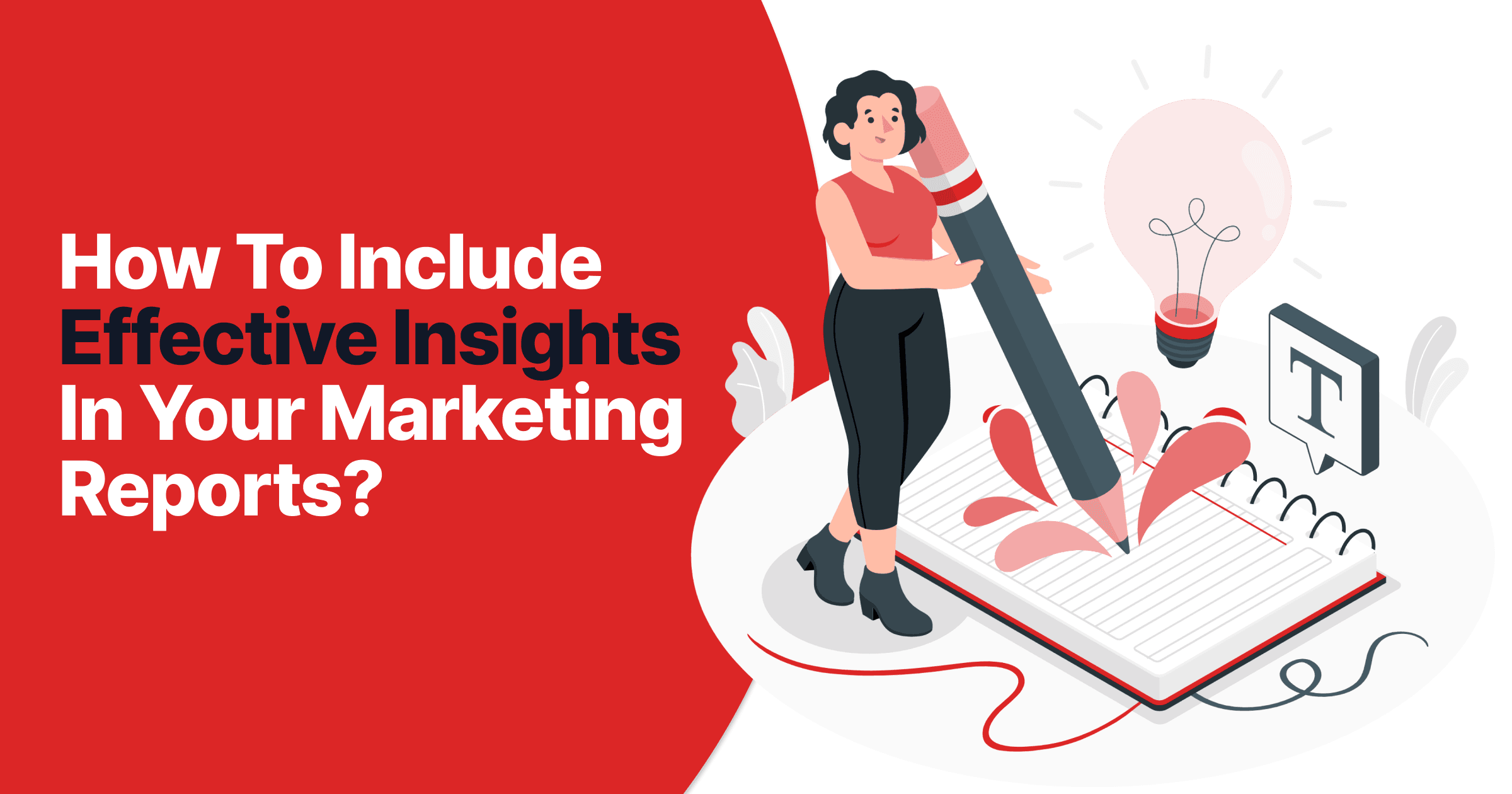Table of Contents
What Are Marketing Insights, and Why Are They Crucial in Reports?
Think of marketing insights as the “why” behind the numbers. Sure, your reports are packed with KPIs, fancy graphs, and all that good data – but what does it all mean? That’s where insights come in. They help your clients actually understand the story behind the data, so they can see how well their campaigns are doing and make those big-picture strategic decisions.
Bottom line: Your digital marketing agency reports shouldn’t just be data dumps. They need those strategic marketing insights to give your clients the whole picture.
Let’s take a look at how you can include insights in your own reports:
Types Of Insights
Goals
Remember those goals you and your client set way back at the start? They’re one of the most important marketing insights you’ll use. Your reports need to put those goals front and center – it keeps both you and your client focused on what success actually looks like.
Think of it this way: goals are the measuring stick for everything else in the report. Did you hit those targets or not? That insight tells you whether the strategies you’re using are working.
For example: If the goal was to get 1,000 new qualified leads in three months with PPC campaigns, that needs to be right up there at the top of your report. It’s the key insight that tells you if your work is on track.
Summary
Think of the Summary as the “executive briefing” section of your report. It’s where you take all that complex data and boil it down to the key insights your client needs. Did they hit their targets? Are they getting good value for money? The summary should answer those questions at a glance.
Pairing your Summary with scorecard widgets is a smart move – it gives a quick visual hit of those key KPIs. But the summary needs to explain what those numbers actually mean for the client’s business.
For example: Instead of just saying “February PPC campaigns generated 400 qualified leads with $1,000 spend”, a great summary adds context: “February PPC campaigns generated 400 qualified leads with $1,000 spend, exceeding goal by 25% and lowering cost-per-lead by 10% compared to the previous month.”
Explanations
Explanations are where you turn those numbers into a real story for your client. “Why did this happen?” “What’s the strategy shift that caused this change?” That’s what insights in this section should answer.
Think of your charts and graphs as the “what”, and your explanations as the “why”. Did a campaign underperform? An explanation could reveal a seasonal reason or a change in the competitive landscape. Did something spike unexpectedly? An explanation might show that a new social media tactic is paying off.
The key is to go beyond “this is what the data shows” and deliver the insights that help clients see the bigger picture and make the right choices going forward.

Conclusion
The Conclusion is where you pull everything together and give your client the roadmap for success. This isn’t just about recapping the past – the best conclusions use those marketing insights to make strong recommendations for the future.
Think of it like this:
- What worked? Double down on those successes.
- What didn’t? Suggest changes to fix things or explore new tactics altogether.
- What do the insights tell you about the big picture? How can the overall strategy get even better?
Remember, digital marketing is all about adapting! Your conclusion shouldn’t be an ending – it’s the setup for the next round of optimization and results.
Email Copy
Don’t think of the email alongside your report as an afterthought – it’s the perfect opportunity to deliver those top-level insights right to your client’s inbox. They may not have time to deep-dive into the report immediately, but well-written email copy ensures they get the core message.
Keep it short and punchy! A few bullet points at the top of your email are the way to go:
- Wins: What are the big successes they need to know about?
- Challenges: Any red flags they should be aware of?
- Action items: What are your top 1-2 recommendations based on the insights?
For example: Your email might start with:
- Hit 80% of quarterly sales target – social media campaigns killing it!
- Email conversion rates need a boost – let’s talk strategy.
- Recommend shifting some budget to the high-performers
What this could look like is as follows:

Extra Tips
Think beyond just text! Adding multimedia elements to your reports is a smart way to level up those insights and make them way more engaging for your clients.
- Video: A short video insight lets you put a face to the data, explaining the key takeaways and why they matter to the client’s business. It shows you’re not just sending a generic report, but taking the time to give them personalized advice.
- Images: Charts, graphs, and even competitor comparisons are far easier to digest visually. Make those insights pop off the page, and they’ll stick in the client’s mind.
Pro tip: Tools like Oviond’s scorecard widgets make this even easier. They turn raw data into polished visualizations that help your clients really “get” the value you’re bringing to the table.
Feeling Insightful Yet?
Optimize Your Reports with Oviond
We get it – adding insightful commentary to your reports takes time. That’s why Oviond makes it super simple to deliver those insights in a way that looks polished and professional. Our text boxes, media uploaders, and email automation tools streamline the whole process, so you spend less time formatting and more time on the strategy.
But Oviond isn’t just about the tools. Our blog is packed with resources to help you get the most out of your marketing insights. Think of it as your guide to better reporting, better client communication, and ultimately, better outcomes for your agency. Check it out here!
